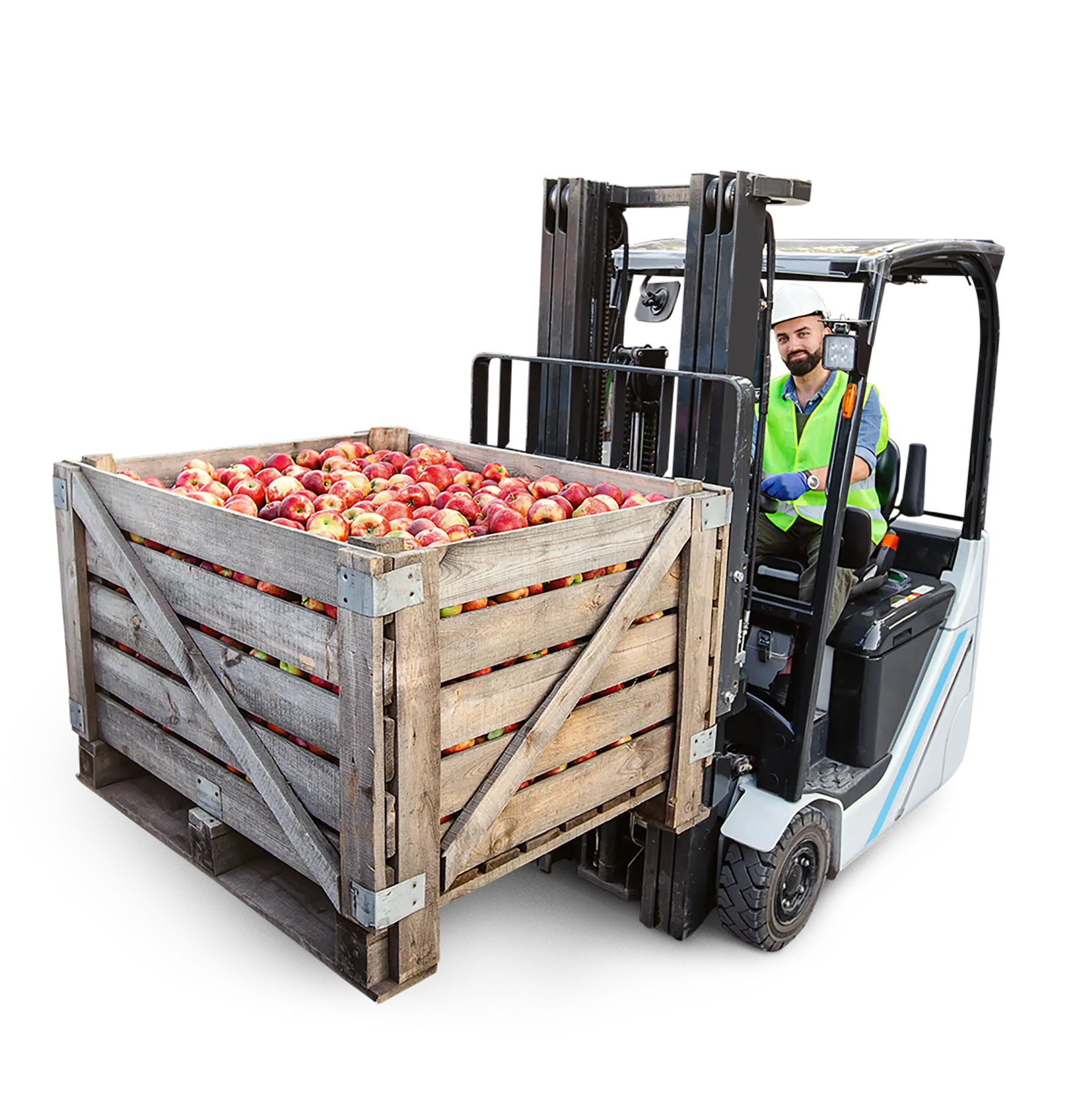Recapping Our Food and Beverage Symposium Roundtable: Remaining Resilient in the Face of Disruptions
Recapping Our Food and Beverage Symposium Roundtable: Remaining Resilient in the Face of Disruptions
Recapping Our Food and Beverage Symposium Roundtable: Remaining Resilient in the Face of Disruptions
21 Sep 2022
 John McCurdy | Senior Content Writer, Marketing
John McCurdy | Senior Content Writer, Marketing
One of the greatest forums for conversation and compelling discourse is the panel discussion. This truth certainly played out during the last session of Aptean’s 2022 Food and Beverage Symposium, titled “Remaining Resilient in the Face of Disruptions: A Roundtable on Technology’s Role in Optimizing Processes and Maximizing Agility.”
Joining Jack Payne, Aptean’s vice president of solutions consulting for the food and beverage market, were three respected industry professionals representing a variety of roles. Aaron Hand, editor-in-chief of ProFood World; Erin Hallstrom, digital director for Food Processing; and Major Williams, IT consultant with years of food and beverage expertise, were our honored guests.
The list of topics to be explored was based on the timely information gleaned from IDC’s Global Food and Beverage Industry Trends and Strategic Insights 2022 whitepaper commissioned by Aptean, covered in detail in the first session of the day with Simon Ellis. Specifically, the group focused on the themes of digital transformation through automation; overcoming labor and skills shortages; and the important considerations for businesses evaluating their fit with cloud solutions.
Read on for a recap of this engaging and entertaining roundtable. You can also watch the full session playback on demand.
Digital Transformation Through Automation
Payne got the discussion started by directing a question on automation to Hand, who has seen the trend develop over the past several years and come to take a primary place as one of the ways that food and beverage companies can become not only more efficient, but also safer and more streamlined. He was quick to point out that while the term frequently brings to mind the use of robots in manufacturing facilities, it’s really a much broader subject than that.
He provided the example of TopPop and their automated packaging technology for ice pops, which can help keep a factory floor less crowded with individual workers. Hand also mentioned cobots, which are robots that work in tandem with employees and offer the potential to improve hygienic standards thanks to how they remove the need for human contact with food and beverage materials.
Then, he pointed to Kraft Heinz as an example of an enterprise applying automation in a different way, this more geared toward the analysis of data for insight and better decision-making.
“We used to try to understand what would happen in the future based on what happened in the past, but that’s kind of out the door now,” Hand said. “Kraft Heinz had made a big move toward predictive strategies that really deal with the supply chain issues we’re seeing.
“They’re also putting almost all of their server assets up in the cloud so that they can get better use of the data that they have available to better understand what’s happening in the market, what’s happening in their inventories and where things need to move,” he concluded.
Hand also pointed out that automation can have implications for supply chain management and sustainability, two hot-button issues of today. Williams made the important point that while automation offers many benefits, the technology itself isn’t the solution—it should act as an accelerator and an enabler of your business strategies.
Overcoming Labor and Skills Shortages
Up next was a question directed to Hallstrom regarding the current labor and skill shortages that food and beverage organizations around the world are facing. To begin, she referenced an episode of her podcast, Food Processing’s “Food for Thought,” and the critical question that one of her guests mentioned when it came to this subject.
“The comment that really stuck out at me was, ‘Are you a company that people want to work for?’” she said. “It seems like such a simple question—it’s almost kind of self-reflective, maybe a little self-aware from the company’s standpoint. But I thought it spoke volumes because it really gets to the heart of some of the current labor issues we’ve seen.”
She elaborated by explaining how increased introduction of new technologies in the food and beverage manufacturing industry will appeal to younger, more digitally savvy workers. That has to be coupled with better outreach and marketing, though, as well as a clear commitment to innovation, a thought which led Payne to bring up the importance of social media.
Hallstrom whole-heartedly agreed and was quick to call out one of her favorite examples of good social media marketing by a food and beverage business in Mars North America’s TikTok account, which gives a behind-the-scenes look at what it’s like to work for the confectionery business. The videos feature individuals in a variety of roles to give viewers a more complete view of the company’s inner workings.
Meanwhile, Williams made the important point that the COVID-19 pandemic prompted many people in the workforce to reflect on their priorities and how their job fits into their life and goals. Hand also stressed the need for businesses to make applying easier, even accessible on mobile and manageable across multiple sessions rather than in one sitting.
When you move to a cloud infrastructure, those [providers] invest in that—they have to in order to maintain integrity with their customers. So if you can’t employ a full-blown cybersecurity staff, a cloud option could be a good fit for you.
Considerations for Cloud Solutions
The final question was directed at Williams and delved into the matter of cloud solutions and how food and beverage companies should go about evaluating their options and approaching a potential switch from on-premise solution deployments. Our guest was quick to point out that it’s not something to rush into, and it must align with your organizational goals at a holistic level.
“It goes back to your business strategy. You’ve got to have a sound business strategy that technology can either enable or accelerate,” Williams said. “Cloud can accelerate a lot of different initiatives, but you have to make sure that it’s right for you.”
He emphasized the fact that the reliability of a business’s internet provider is a crucial factor to weigh in any exploration of cloud implementations—after all, when your connection is down, even a solid cloud hosting infrastructure becomes unusable. A risk assessment is also a necessary step, as not having your data saved on servers or drives at your physical facilities can sometimes result in setbacks and complications.
At the same time, though, Williams recognized that there can be substantial benefits unlocked by a move to the cloud, including lower costs, in no small part due to the fact that no additional hardware needs to be acquired, nor does a company’s internal IT staff need to expand. What’s more, there can be substantial improvement on the all-important front of cybersecurity.
“Cybersecurity is a serious thing, even if everybody thinks it’s not going to happen to them,” Williams said. “When it hits you, it hits you hard. Not only do you have to restore your data, but you have to figure out how they got in, you’ve got to replace all your equipment, you’ve got to upgrade, you’ve got to patch, and all that takes serious skill to manage.
“When you move to a cloud infrastructure, those [providers] invest in that—they have to in order to maintain integrity with their customers. To offer a good service, they have to be very cyber-security aware and make that commitment. So if you can’t employ a full-blown cybersecurity staff, a cloud option could be a good fit for you,” he concluded.
Hallstrom added that the matter of cybersecurity is more familiar to younger generations, including millennials and Gen Z, which puts an even greater emphasis on the need to recruit from those pools of workers. Meanwhile, Hand pointed out that the proliferation of data, combined with a gradual easing of the resistance to change from physical data storage, is also bolstering the cloud movement.
Aptean: Thought Leadership and Award-Winning Solutions
This latest edition of our annual Food and Beverage Symposium was another knockout virtual event, with a full agenda of insightful speakers and intriguing sessions that covered many of today’s top industry challenges and trends. At Aptean, we’re proud of our reputation for keeping up with what’s going on in the industry and delivering key insights based on our experience and research so that food companies are better prepared for what’s next.
Of course, there are also our highly acclaimed solutions, including Aptean Food & Beverage ERP, which was honored with Frost and Sullivan’s 2022 Product Leadership Award in North American ERP Software for the Food and Beverage Industry. This recognized not only our commitment to the market but also our constant pursuit of improvement and better outcomes for our clients.
Additionally, our food ERP has the advantage of unique, industry-specific technology built on the Microsoft Dynamics 365 Business Central platform, which lends it an approachable interface and low barrier to entry for employees in all roles. And finally, we offer flexible cloud implementations on a Software as a Service (SaaS) basis for those businesses looking to capitalize on the benefits this deployment model provides.
Now, if you’re ready to learn more about Aptean Food & Beverage ERP and what it can do for your company, contact us today. You can also request a personalized demo to see the software in action for yourself.
Creating a More Sustainable Business
Sustainable food production and distribution is easier to achieve when broken down into a play-by-play strategy. Aptean has collated key plays to help optimise your sustainability strategy.



